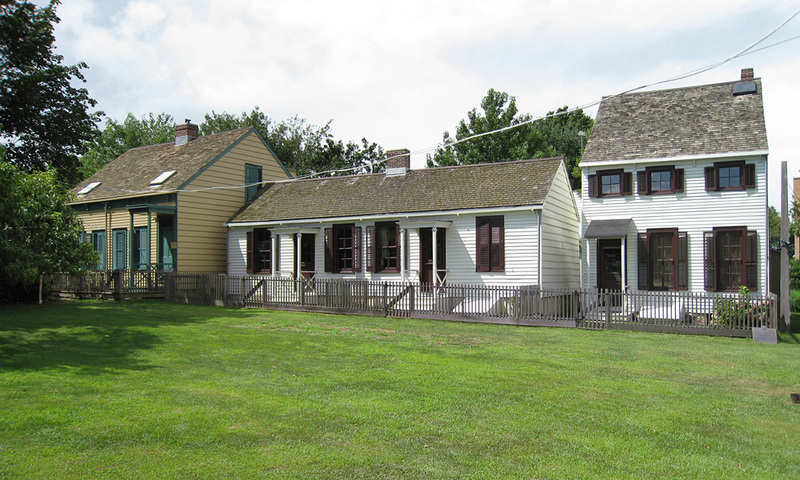Weeksville, NY (Bedford-Stuyvesant)
Item
Title
Weeksville, NY (Bedford-Stuyvesant)
Description
In 1838, only eleven years after slavery ended in New York State, free African-American James Weeks purchased a modest plot of land from Henry C. Thompson, another free African-American. That land, in what is now Central Brookly, became Weeksville, a thriving, self-sufficient African-American community. Weeksville quickly became a safe haven for southern Blacks fleeing slavery and free nothern Blacks fleeing racial hatred and violence, including the deadly Civil War draft riots in lower Manhattan. Established as a suburban enclave on the outskirts of Brooklyn, by 1850 Weeksville became the second-largest known independent African-American community in pre-Civil War America. Weeksville was also the only African-American community whose residents were distinctive for their urban rather than rural occupations, and the only one that merged into a neighborhood of a major American city after the Civil War.
Moreover, Weeksville had a higher rate of African-American property ownership than 15 other U.S. cities and more job opportunities than ten other northern cities. By the 1860s, Weeksville had its own schools, churches, an orphanage, an old age home, a variety of Black-owned businesses and one of the country's first African-American newspapers, Freedman's Torchlight. Almost 500 families headed by ministers, doctors, teachers, tradesmen, and other self-reliant citizens lived in Weeksville by the 1900s. Weeksville covered seven blocks and was a model of African-American entrepeneurial success, political freedom, and intellectual creativity. Its residents participated in every major national effort against slavery and for equal rights for free people of color, including the Black convention movement, voting rights campaigns, the Underground Railroad, the Civil War, resistance to the Draft Riots in New York City, Freedman's Schools, and African nationalism. The community still existed through the 1930s, but by the mid-1950s, Weeksville was all but forgotten, with many of its structures and institutions replaced by new roads and buildings.
Moreover, Weeksville had a higher rate of African-American property ownership than 15 other U.S. cities and more job opportunities than ten other northern cities. By the 1860s, Weeksville had its own schools, churches, an orphanage, an old age home, a variety of Black-owned businesses and one of the country's first African-American newspapers, Freedman's Torchlight. Almost 500 families headed by ministers, doctors, teachers, tradesmen, and other self-reliant citizens lived in Weeksville by the 1900s. Weeksville covered seven blocks and was a model of African-American entrepeneurial success, political freedom, and intellectual creativity. Its residents participated in every major national effort against slavery and for equal rights for free people of color, including the Black convention movement, voting rights campaigns, the Underground Railroad, the Civil War, resistance to the Draft Riots in New York City, Freedman's Schools, and African nationalism. The community still existed through the 1930s, but by the mid-1950s, Weeksville was all but forgotten, with many of its structures and institutions replaced by new roads and buildings.


